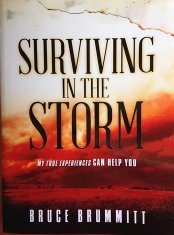Rinker Buck. Life on the Mississippi. Avid Reader, 2022.
I born in Pittsburgh and lived there till I was eleven. I can still recall singing the song in school:
The river is up and the channel is deep
The wind is steady and strong.
Oh, won’t we have a jolly good time
As we go sailing along?
Down the river, oh, down the river, oh, down the river we go-oh-oh
Down the river, oh, down the river, down the O-hi-o.
I also recall reading a YA book back then called Down the Big River about a family taking a flatboat down the Ohio River in early pioneering times.
And then, when I was about ten, our family went on a little boat tour on the three rivers around Pittsburgh. I do not remember much of the specific details pointed out on the tour, but the captain of the boat said that in the off season he would sail down all the way to New Orleans. What an adventure! I thought to myself.
I have never had the opportunity to take such a trip, but I was excited when I heard about Life on the Mississippi, not the Twain classic, but a new book by a man who took about a year off (all told) to build a flatboat replica and sail it from the Pittsburgh area down the Monongahela, Ohio, and Mississippi Rivers to New Orleans. The voyage itself took about four months. This is his story and his reflections.
The title is a little misleading. There are twenty-two chapters in the book. He does not reach the Mississippi River until chapter 17. It might be more accurately be called Life on the Ohio and Mississippi, but using a familiar title makes the title easier to recall.
The first few chapters tell how Mr. Buck, the author, employed a replica shipbuilder from the Cumberland River in Tennessee to build a replica flatboat. He then had it trailed to Elizabeth, Pennsylvania, south of Pittsburgh. Then he assembled a crew, which changed from week to week, and he floated and sailed down the rivers to New Orleans.
Buck reminds us that while covered wagons and the Oregon Trail are more a part of the American memory today, the West really opened up around the time of the American Revolution because of the intrepid people who sailed down the Ohio and its tributaries to the Mississippi. They settled all along the way and sold their goods including lumber, furs, crops, and coal down the river. New Orleans would become the primary port for American exports, a claim it can still make today.
A few years ago we reviewed The Frontiersmen, about an early Kentucky settler and his adventures and ordeals. Daniel Boone figured in that book. Boone himself eventually moved west beyond Kentucky and settled in Missouri. That book covered the period, more or less, from before the French and Indian War to the War of 1812 and beyond. While Life on the Mississippi is set in less a year in contemporary America, much of the book is a reflection of how we got to where we are.
To be honest, Buck takes a hostile, almost bitter, perspective on American history—industrial pollution, Indian removal, slavery. While The Frontiersmen does not gloss over these things, it is a little more respectful. Still, we cannot help admire Buck’s odyssey—with the assistance of radar, radio, GPS, electronic tablets, and the internal combustion engine. Imagine how much more challenging it must have been without those amenities, not to mention things like buoys and other aids to navigation, dams, and locks which also have done a lot to tame the rivers. We really do appreciate those pioneers. Buck maintains, probably correctly, those “river rats” did much more to open the West than the later wagon trains and railroads did.
Buck narrates Life on the Mississippi in the first person. He himself seems to have changed in the course of his story. About halfway through, I was thinking to myself that as much as I envy him taking this river trip, many things annoy him. I am not sure I would want to spend a few weeks on a small boat with him.
That would change. Buck changed crews frequently. People would join him and leave him for a few weeks at a time. Most people could not take the time off that he could. He tells us that he was caring for his elderly mother in Maine until she passed away. He had no other close family attachments or responsibilities, so he was free to pursue this dream. One particular person on his original crew annoyed Buck to the point of serious anger. The person who built the boat ignored most of Buck’s suggestions. Those things set a tone that for nearly the first half of the book. There is a lot of complaining—not just about the shipmate and shipbuilder but about many other things they had to deal with.
Once that person leaves the crew, the whole narrative and voyage take on a different perspective. Now it becomes an adventure. Now most of the people he meets on the river are kind, helpful, and encouraging. He comes to appreciate the massive transportation network the Mississippi and its tributaries created. Tug strings of upwards of twenty-five barges can carry so much more than so many tractor-trailers or even rail cars. The barges were perhaps his biggest navigation challenge, but he learned quickly that he could learn from them and sometimes even follow them the way a motorcyclist can slipstream a truck on the highway.
There is a lot of humor. While few writers are as clever or incisive as Twain, it is clear that Buck enjoys some irony. He loses track of the number of times he is warned about his trip. The currents, the huge tug strings, the wing dams, rip rap, submerged vessels and trees, criminal types along the shore could all put an end to the trip, or so he is told. He and his crew were warned a number of times that whirlpools on the river were strong enough to not only drown them, but strip them of all their clothing. That caused one of his crew mates to joke that he had duct taped his underwear to his body to avoid such a fate.
He also notes that a few people warned them that they were making a mistake not having any kind of gun or pistol on board.
Upriver, the off-duty cops and redneck river rats who had come aboard implored us to get weapons because the blacks in Vicksburg and Baton Rouge were going to pour over the banks to rob the boat. Downriver, black kids were convinced the rednecks were going to get us. The race-blind solution for all was the same: America, Get Guns. (356)
Even with all the amenities mentioned above, this was not an easy venture. Some things, such as an electric bicycle, turned out be invaluable. They had a few close calls navigating, and Buck twice broke some ribs. Having broken ribs once myself, there is not much anyone can do about it other than bear the pain till it goes away. Ribs really cannot be set or put in a cast.
Although there were a handful of days when Buck was alone on the boat, most of the time he had others for a crew. We are reminded that we all have different talents, abilities, and even personalities, and that because of that we do need each other. I was reminded time and again of another song about the boats on the river, “Proud Mary”:
People on the river are happy to give.
There might be some bitter history, but most Americans are really great people.

